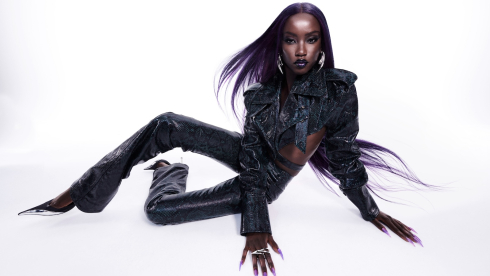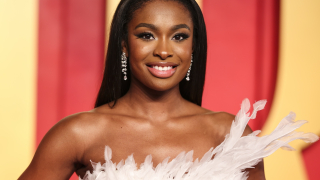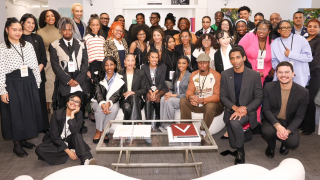Many young writers, no matter how independent they are as thinkers, want to be down with a cool group of fellow scribes. Flipping through library books, we read about the days of Ernest Hemingway and F. Scott Fitzgerald hanging tough in Paris; Langston Hughes and Claude McKay doing their thing in Harlem; and the Beat boys Jack Kerouac and William Burroughs driving cross country. Some of us want to sit down at the Algonquin’s round table with Dorothy Parker, while others wanted to talk through the night inside Ralph Ellison’s massive Riverside Drive apartment.
Yet for me, as a young writer coming of age in the early 1980s, it was the discovery of the Black Arts Movement (BAM) spearheaded by poet Amiri Baraka which inspired me to aspire higher in my chosen craft. These were the cats, with their beards and their poetics barbs, who first made me aware it was all right to be me when I sat in front of a blank page.
Baraka, who died yesterday at the age of 79, relocated from the Lower East Side to Harlem in 1965 shortly after the assassination of Malcolm X. Moving from his downtown digs, where he was a respected “Black beat writer” and music critic by the name of LeRoi Jones, to the fertile ground of Uptown, the then 31-year-old scribe decided to make several changes.
In the name of art and revolution, he shed his name, abandoned his family, and transformed his anger into literature. “After Malcolm’s death, Black artists met and decided we were gonna move into Harlem and bring our art, the most advanced art by Black artists, into the community,” Baraka told NPR in 2007.
Fellow writers Sonia Sanchez, Larry Neal, and many others of a new generation of wordsmiths created plays, prose and critical essays that were the textual equivalent of Molotov cocktails. “The Black Arts Movement is radically opposed to any concept of the artist that alienates him from his community,” poet Larry Neal proclaimed. “It speaks directly to Black people. [We are] the aesthetic and spiritual sister of the Black Power Movement.”
Later, Neal would add that one of the prime reasons behind their renaissance was “…the destruction of the White ways of looking at the world.” With their powerful texts, including 1968’s Baraka/Neal co-edited collection Black Fire (which sparked my own interests in the movement when I discovered it as a teenager), the writers of BAM inspired many folks, not necessarily all Black.
According to novelist Ishmael Reed, whose early novels Mumbo Jumbo and Flight to Canada show the ink stains of BAM, “There would be no multiculturism movement without Black Arts. Latinos, Asian-Americans and others all say they began writing as a result of the example of the 1960s. Blacks gave the examples that you didn’t have to assimilate. You could do your own thing, get into your own background, your own history, your own tradition and your own culture.”
Although a diverse crew of talented writers (including Nikki Giovanni, Steve Cannon, John Farris, Ed Bullins and David Henderson) came out of the Black Arts Movement, by the mid-1970s this artistic branch of the Black Power movement became fragmented and splintered. But it never really went away.
“BAM was the vehicle through which we learned the language of self-love and self-determination,” poet and memorist Asha Bandele says. “It took our politics and allowed them to take shape in living and real world colors so vibrantly we were able to create new music, new forms of scholarship, of business. It pushed a culture back to its core and then rebirthed it for a modern age. And Amiri was the Big Baba.”
In the 1980s, the influence of BAM could be seen in the works of filmmaker Spike Lee, cultural critic Greg Tate, rap artists Public Enemy and the paintings of Jean-Michel Basquiat. “The seeds of the Black Arts Movement are pretty much everywhere, even if they are not always acknowledged,” says Washington D.C. based writer and college professor Rion Amilcar Scott. “A lot of early political rap mined themes and rhythms established in a lot of Black Arts works. Boots Riley of the Coup cites Baraka frequently. Perhaps the nation’s greatest playwright, August Wilson, came out of the Black Arts Movement and cited Baraka as one of his biggest influences.”
Pulp writer Gary Phillips, who’s written many crime novels and comic books, is yet another example of the BAM influence on popular culture. “As I developed politically in the ’70s, encountering the works of Don L. Lee opened up my head to how words could be used, as cudgel and scalpel. That Black American culture specifically could not be denied, that there was more for readers to discover beyond the so-called mostly dead White men canon of literature.
“Reading Baraka—and seeing the film version of The Dutchman—coincided with my exposure to the godfathers of ghetto lit Donald Goines and Iceberg Slim, as well as Black characters in comics, and Blaxploitation films. I concluded that ‘lift up the race’ aspirational, overtly political, and genre fiction all had their place in expressing the gamut of the Black experience.”
Although, as literary critic David Lionel Smith pointed out, “the silence regarding the Black Arts Movement is deafening” (especially when compared to the Beats), the spirit of their revolution is still relevant nearly 50 years later.
As poet LaTasha N. Nevada Diggs says so lyrically, “The shoes Amiri and the Black Arts Movement crafted are large and wide and deep. They are not five-inch platform stilettos, as they were meant to walk long hard roads and run when the opportunity arose. These elders, many of which we are still learning of, must learn about, have kept this movement alive since 1965. The BAM never disappeared, never folded, never fell into despair. It only transformed.”
Amiri Baraka is survived by his wife, Amina, and his son, Ras. Survivors include three other sons, Obalaji, Amiri Jr. and Ahi; four daughters, Dominique DiPrima, Lisa Jones Brown, Kellie Jones and Maria Jones; and several grandchildren and great-grandchildren. Among Mr. Baraka’s many honors are the PEN/Faulkner Award, the Rockefeller Foundation Award for Drama and membership in the American Academy of Arts and Letters.
Cultural critic Michael A. Gonzales has written cover stories for Vibe, Uptown, Essence, XXL, Wax Poetics and elsewhere. He’s also written for New York and The Village Voice. Read him at Blackadelic Pop and follow him on Twitter @gonzomike.













